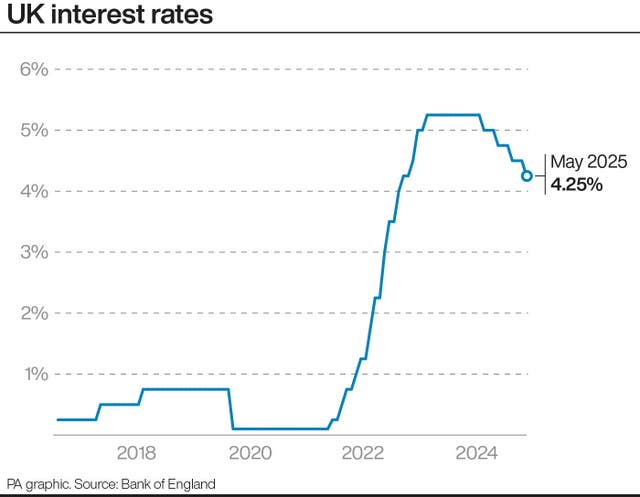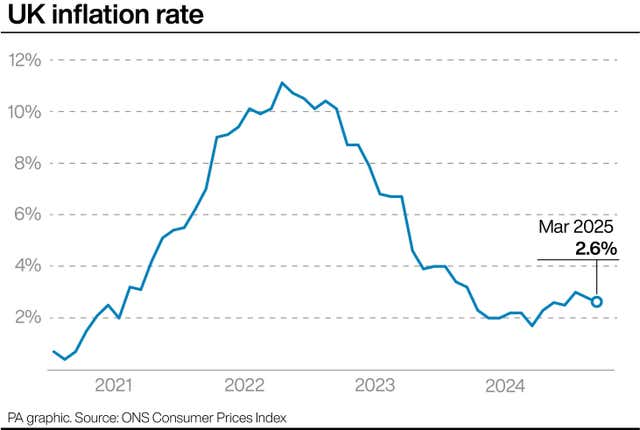Interest rates: Why have they been cut and what does it mean?
Here the PA news agency looks at what the decision means and what the Bank expects to happen to the economy.

The Bank of England has cut interest rates to 4.25%, its lowest level in two years.
It marks the second time this year that rates have been reduced, thanks to the overall inflation rate falling in recent months.
Here the PA news agency looks at what the decision means and what the Bank expects to happen to the economy.

– What happened to interest rates on Thursday?
The Bank of England’s Monetary Policy Committee (MPC) reduced the base interest rate by 0.25 percentage points, to 4.5%.
It is the fourth time interest rates have been cut over the past year, since they first started coming down from a peak of 5.25%.
It was a split vote among the MPC – made up of nine people responsible for setting rates – with five members voting for the quarter-point reduction.
Two wanted a bigger half-point cut, while another two preferred to keep rates unchanged.
– What does it actually mean?
The base rate helps dictate how expensive it is to take out a mortgage or a loan.
Many lenders have been chopping rates in recent weeks, including several offering deals at sub-4% levels, in expectation of the Bank of England lowering its base rate.
Experts said this could be good news for people with a fixed-rate mortgage who are coming to the end of their term, because rates have been falling relative to where they were last year.
The base rate also dictates the interest rates offered by banks on savings accounts, meaning these are likely to fall.
– What about inflation?
Raising interest rates is the central bank’s main way of reducing inflation – the measure of how fast prices increase over time.
The UK’s main measure of inflation, CPI (Consumer Price Index), slowed to 2.6% in March, from 2.8% in February, according to the latest official data.
The Bank’s Governor, Andrew Bailey, said on Thursday: “Inflationary pressures have continued to ease so we’ve been able to cut rates again today.”
It means the cost of living is still going up, but at a much slower rate than in recent years, and close to the 2% level that the Bank of England always aims for.
However, inflation is expected to temporarily increase in the coming months thanks to price hikes from April – including electricity and water bills and council tax for many households.
New forecasts from the Bank show CPI peaking at 3.5% in the third quarter of this year, on the back of rising energy prices, before falling back down.

– Will rates continue to fall now?
The MPC is due to meet five more times this year, when it can decide whether further cuts to interest rates are needed.
Mr Bailey said the committee needed to “stick to a gradual and careful approach to further rate cuts”, adding: “Ensuring low and stable inflation is our top priority.”
Economists have said they think this signals the Bank will continue with its path of cutting rates once per quarter – meaning they could push through two more reductions this year.
Sandra Horsfield, an economist for Investec, said: “For now we remain comfortable with our long-held view that the Bank rate will be lowered twice more this year, to end 2025 at 3.75%, and then be reduced to 3% over the course of 2026.”

– What impact could Donald Trump and US tariffs have?
Thursday’s decision on interest rates was the first since US President Donald Trump’s “liberation day” tariff announcements last month.
It is clear from the MPC’s report that policy in the US and the impact on global trade was an important part of the economic outlook and the group’s discussions on interest rates.
The committee warned that an escalating global trade war will drag on economic growth over the next three years.
However, it also stressed that it was too early to predict exactly how things would play out, especially as new trade agreements are struck.





